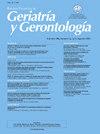加利西亚是一个潜在的蓝色区域吗?]
Q3 Medicine
引用次数: 0
摘要
导言:上个世纪发生的健康和社会改善导致了所有年龄组人类寿命的延长,百岁老人人口也随之延长。这项研究的目的是绘制加利西亚地区的地图,确定百岁老人比例最高和最低的地区。方法:利用国家统计局和加利西亚统计局的数据库,计算每10万居民中百岁老人的比率,并以地图集表示。结果:加利西亚是百岁老人患病率第二高的自治区,乌伦塞和索里亚是百岁老人患病率最高的省份。在加利西亚社区,我们观察到明显的东西方对比;2个大西洋省份A Coruña(57.72)和Pontevedra(73.49)的百岁老人比例明显低于Lugo(96.61)和Ourense(127.19)。县一级的分析表明,百岁老人最集中的地区是蓬特维德拉东部、卢戈南部和乌伦塞省的农村地区。百岁老人人口呈女性化趋势,其中女性百岁老人的数量是男性百岁老人数量的3倍。结论:加利西亚是一个百岁老人高发的地区,其沿海地区和内陆地区以及其领土的北部和南部地区之间存在明显的对比,其比率与被认为是“蓝色区域”的地区有关。本文章由计算机程序翻译,如有差异,请以英文原文为准。
¿Es Galicia una posible zona azul?
Introduction
The health and social improvements that have occurred in the last century have led to a prolongation of human existence in all age groups and with it the population of centenarians. The aim of this study was to map the Galician territory, identifying the areas with the highest and lowest rates of centenarians.
Method
Using the databases of the National Institute of Statistics and the Galician Institute of Statistics, the rates of centenarians per 100,000 inhabitants were calculated and represented as choropleth maps.
Results
Galicia is the second autonomous community with the second highest rate of centenarians and Ourense, together with Soria, are the provinces with the highest prevalence of centenarians. In the Galician community we observe a clear East-West contrast; the 2 Atlantic provinces, A Coruña (57.72) and Pontevedra (73.49), have significantly lower rates of centenarians than Lugo (96.61) and Ourense (127.19). The analysis at county level indicates that the highest concentration of centenarians is found in rural areas in the eastern part of Pontevedra, the south of Lugo and in the province of Ourense. There is a feminisation of the centenarian population, where the number of female centenarians is 3 times higher than the number of male centenarians.
Conclusions
Galicia is a region with a high prevalence of centenarians, with a clear contrast between coastal and inland areas and between the northern and southern areas of its territory, with rates associated with those considered «blue zone».
求助全文
通过发布文献求助,成功后即可免费获取论文全文。
去求助
来源期刊

Revista Espanola de Geriatria y Gerontologia
Medicine-Medicine (miscellaneous)
CiteScore
1.90
自引率
0.00%
发文量
62
审稿时长
85 days
期刊介绍:
Una revista de gran prestigio por sus artículos originales de investigación y revisiones. Permite cubrir todas las áreas de la medicina pero siempre desde la atención al paciente anciano, y está presente en los más reconocidos índices internacionales.
 求助内容:
求助内容: 应助结果提醒方式:
应助结果提醒方式:


